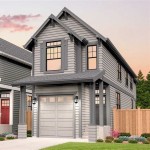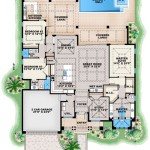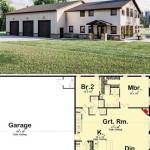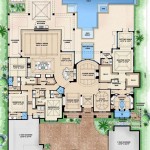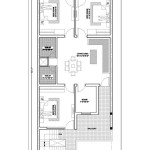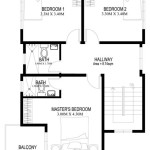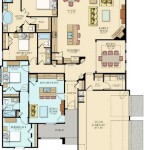Low Country House Plans with Wrap Around Porch: A Timeless Appeal
Low Country house plans, particularly those featuring wrap-around porches, evoke a sense of timeless elegance and Southern charm. These designs, deeply rooted in the architectural traditions of the coastal regions of the Southeastern United States, offer a unique blend of aesthetic appeal and functional living spaces. The wrap-around porch, a defining characteristic, provides a seamless transition between the indoor and outdoor environments, fostering a relaxed and convivial atmosphere.
The popularity of Low Country house plans extends beyond the geographical boundaries of their origin. Their adaptability, coupled with the inherent appeal of a slower-paced lifestyle, makes them a sought-after choice for homeowners across various climates and regions. This article explores the key features, benefits, and design considerations associated with Low Country house plans that incorporate a wrap-around porch.
Key Features of Low Country Architecture
Low Country architecture is characterized by several distinct features that contribute to its unique aesthetic and functionality. These elements are not merely decorative; they are deeply interwoven with the historical context and environmental considerations of the region.
Firstly, elevation is a crucial aspect. Historically, houses in the Low Country were often built on raised foundations. This elevation served multiple purposes: protecting the structure from flooding, providing better ventilation to combat the humid climate, and offering a better vantage point. Modern interpretations of Low Country designs frequently retain this elevated foundation, even in areas where flooding is not a primary concern, as it adds to the visual appeal and allows for the creation of storage space or a garage underneath the main living area.
Secondly, the use of natural materials is a hallmark of the style. Traditional Low Country homes frequently incorporated wood, particularly cypress and pine, readily available in the region. These materials are durable and weather-resistant, perfectly suited for the coastal environment. Modern designs may incorporate engineered wood products or other sustainable materials, while still maintaining the aesthetic integrity of the original style. The exterior siding is often clapboard or shingle, further enhancing the classic look. Brick accents, particularly for chimneys and foundations, are also common.
Thirdly, large windows are a common feature, designed to maximize natural light and ventilation. The placement of these windows is carefully considered to capture prevailing breezes and reduce the need for artificial cooling. Shutters, both decorative and functional, are another characteristic element, providing protection from the sun and storms. These shutters can be louvered or paneled and add another layer of visual interest to the facade.
Rooflines are typically gabled or hipped, often with a steep pitch to facilitate water runoff. Metal roofing is a traditional choice, prized for its durability and longevity. These roofing materials also contribute to the distinctive sound of rain falling on the roof, adding to the ambiance of the home. Dormers are frequently incorporated to add light and space to the upper floors.
Finally, color palettes tend to be muted and natural, reflecting the coastal environment. Whites, creams, grays, and blues are common choices, creating a calming and serene atmosphere. Accent colors, such as Charleston green (a very dark, almost black green), are sometimes used for shutters, doors, and trim, adding a touch of sophistication.
The Allure of the Wrap-Around Porch
The wrap-around porch is arguably the most iconic feature of Low Country house plans. More than just an architectural element, it represents a lifestyle – a connection to nature, a space for relaxation, and a welcoming invitation to socialize.
The primary benefit of a wrap-around porch is undoubtedly its expanded outdoor living space. It provides ample room for seating, dining, and entertaining, effectively extending the usable square footage of the home. This is particularly valuable in warmer climates where outdoor living is a year-round possibility. The porch offers a sheltered space to enjoy the outdoors, protected from the sun, rain, and wind. This allows for comfortable outdoor living throughout the year.
Furthermore, a wrap-around porch enhances the aesthetic appeal of the home. It adds dimension and visual interest to the facade, creating a sense of depth and grandeur. The porch also serves as a unifying element, tying together the different sections of the house and creating a cohesive architectural design. Properly designed, the porch contributes significantly to the curb appeal of the property.
From a functional perspective, the wrap-around porch provides enhanced ventilation and shading. By providing cover for the windows, it helps to keep the interior of the house cooler in the summer months, reducing the need for air conditioning. The porch also encourages natural ventilation, allowing for cross-breezes to flow through the house. This natural ventilation can significantly improve indoor air quality and reduce energy consumption.
The wrap-around porch also fosters a sense of community and connection. It provides a welcoming space for neighbors to stop and chat, creating a sense of neighborhood camaraderie. It is a space where families can gather, children can play, and memories can be made. The porch becomes an integral part of the social fabric of the home and the community.
Finally, the design of the wrap-around porch is often customized to reflect the homeowner's personal preferences. Details such as the railing style, the porch flooring material, and the lighting fixtures can be tailored to create a unique and personalized space. Options like screened-in sections, ceiling fans, and outdoor fireplaces can further enhance the functionality and comfort of the porch.
Design Considerations for a Low Country House Plan with Wrap Around Porch
While the aesthetic appeal of Low Country house plans with wrap-around porches is undeniable, careful planning and consideration are essential to ensure that the design is both functional and aesthetically pleasing. Several factors must be taken into account during the design process.
Firstly, the orientation of the house is critical. The porch should be positioned to take advantage of natural breezes and provide optimal shading. This often involves orienting the house to face south or east, depending on the specific location and climate. Careful consideration should be given to the prevailing wind direction and the path of the sun throughout the day. The goal is to create a porch that is comfortable and usable throughout the year.
Secondly, the size and proportion of the porch must be carefully considered in relation to the overall size of the house. A porch that is too small will feel cramped and uncomfortable, while a porch that is too large will overwhelm the house and detract from its aesthetic appeal. The ideal size of the porch will depend on the intended use and the number of people who will typically use it. It is important to strike a balance between functionality and aesthetics.
Thirdly, the materials used for the porch should be durable and weather-resistant, able to withstand the elements. Common choices include treated lumber, composite decking, and brick or stone pavers. The railing style should complement the overall architectural style of the house. Wrought iron railings, wood railings, and composite railings are all popular choices. The selected materials should be not only durable but also aesthetically pleasing and in keeping with the overall design of the home.
Fourthly, the layout of the interior spaces should be carefully considered in relation to the porch. Ideally, the main living areas, such as the living room and dining room, should be directly accessible from the porch, creating a seamless transition between the indoor and outdoor spaces. Large windows and doors should be used to maximize natural light and ventilation. The goal is to create a home that feels open and airy, with a strong connection to the outdoors.
Fifthly, accessibility is an important consideration. The porch should be easily accessible from the yard and from the interior of the house. Consider incorporating ramps or gradual slopes to make the porch accessible to people with mobility limitations. Proper lighting is also essential to ensure that the porch is safe and usable at night. Adequate lighting also enhances the visibility of the home and makes it more welcoming.
Finally, landscaping plays a crucial role in enhancing the appeal of a Low Country house plan with a wrap-around porch. Plants, trees, and shrubs can be used to create a sense of privacy and to soften the lines of the house. Consider planting fragrant flowers and herbs near the porch to create a pleasant sensory experience. The landscaping should complement the architectural style of the house and create a cohesive and inviting outdoor space.

Plan 46666 Lowcountry With Full Wrap Around Covered Porch

House Plans With Wraparound Porches Porch Houseplans Com

Plan 46666 Lowcountry With Full Wrap Around Covered Porch
House Plans With Wraparound Porches Porch Houseplans Com

Low Country Farmhouse House Plan W Wrap Around Porch

Low Country House Plans Home For Southern Living Donald A Gardner Interactive Llc

House Plans With Wraparound Porches Porch Houseplans Com

Country House Plans With Front Porches

Summertime Lowcountry House Plan Southern Living Plans

Rustic Ranch Style House Plan 4369 Pine Creek
Related Posts

